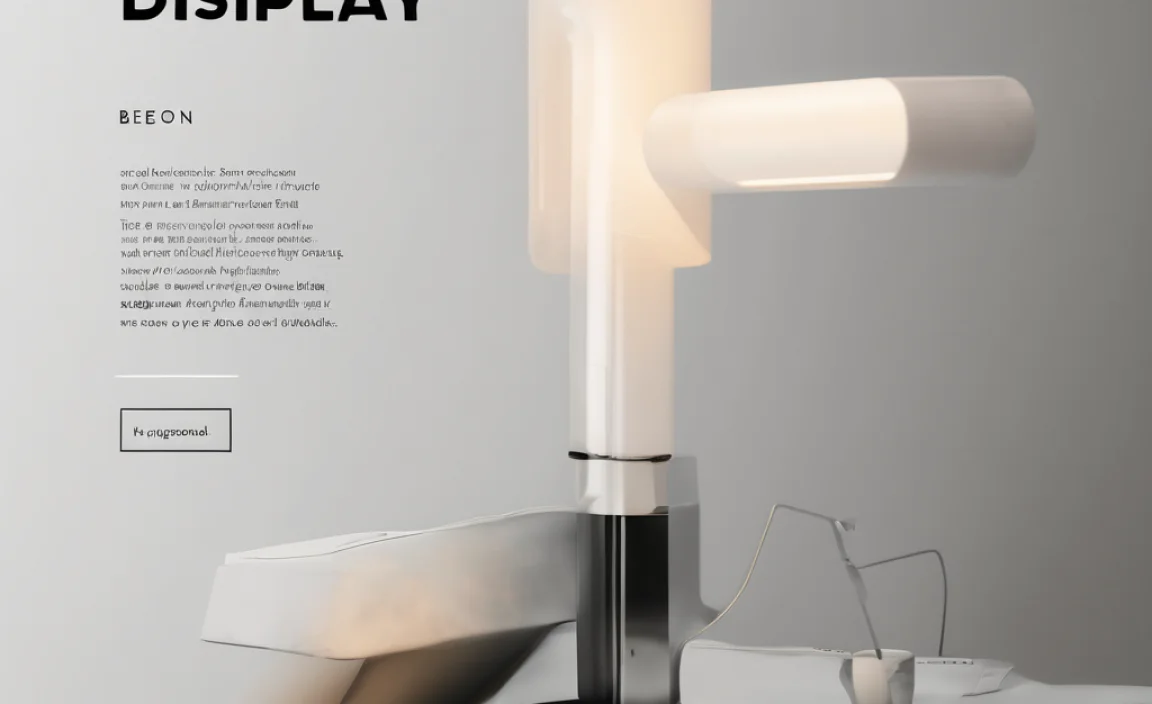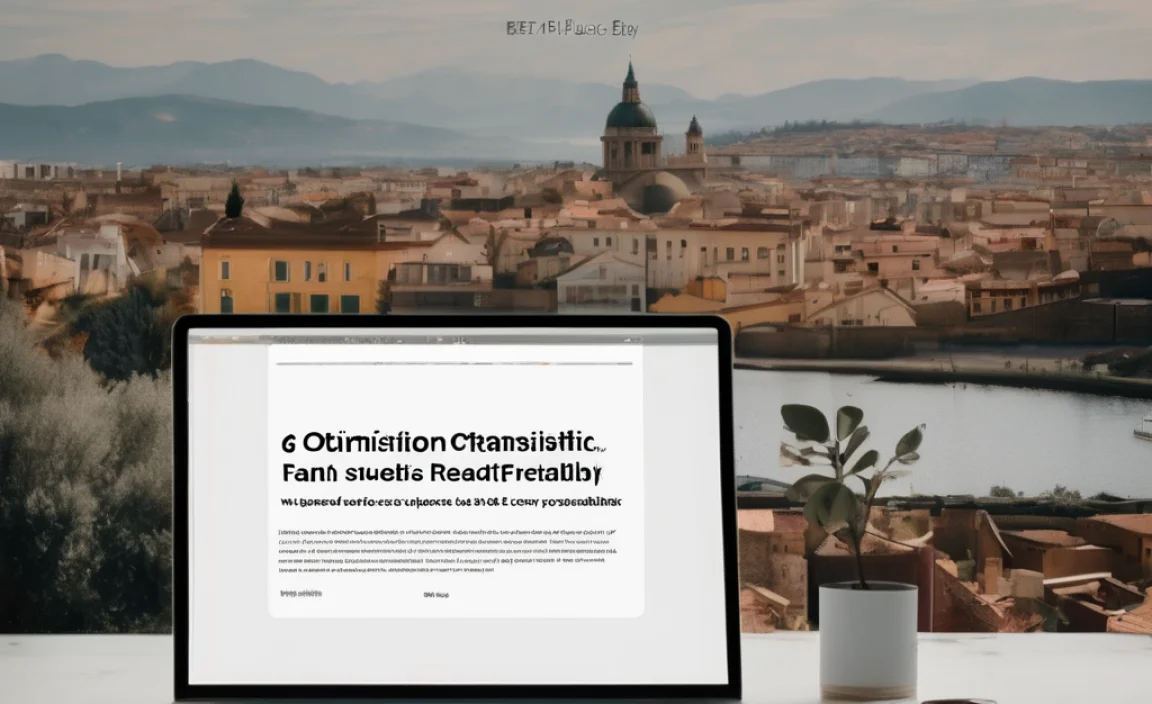Shinobi Font is a clever and accessible approach to learning typography by focusing on the practical application and visual storytelling of fonts. It’s a genius way to learn because it breaks down complex font concepts into digestible, actionable steps, making design principles easy to grasp for beginners and professionals alike.
Ever felt a bit lost when choosing the perfect font? It’s a common puzzle! Fonts can seem intimidating, like a secret code only designers understand. But what if learning about them could be as exciting as discovering a hidden talent? We’re diving into a unique and super effective method that makes understanding fonts, and even learning to use them like a pro, feel almost second nature. Get ready to unlock a new level of design confidence, because we’re about to reveal how a “Shinobi” approach to fonts can revolutionize your learning experience. Let’s make typography your new superpower!
What is the Shinobi Font Approach?
The “Shinobi Font” approach is less about a specific font and more about a philosophy of learning typography. Think of a Shinobi – a master of stealth, strategy, and precise execution. This learning method applies those same principles to understanding and using fonts. It’s about becoming adept at recognizing a font’s personality, understanding its context, and wielding it with purpose to enhance communication. Instead of memorizing endless font families or technical terms, you learn by observing, imitating, and applying. It’s a hands-on, intuitive, and deeply practical way to master the art of type.
The core idea is to learn through observation and application, much like a warrior honing their skills through rigorous practice and strategic thinking. You analyze fonts in the wild, understand their intended impact, and then replicate those successes in your own projects. This method prioritizes understanding why a font works in a particular situation over simply knowing what it is. It’s about developing an eye for detail and a strategic mind for design choices.
Why is this “Genius”?
This approach is considered genius because it cuts through the jargon and complexity often associated with typography. It’s effective for several key reasons:
- Intuitive Learning: It taps into our natural ability to learn by doing and observing, making the process feel less like studying and more like discovery.
- Practical Application: Every lesson is geared towards real-world use, so you’re not just learning theory; you’re learning to do.
- Confidence Building: By focusing on achievable steps and immediate feedback (seeing the results of your font choices), it builds confidence quickly.
- Adaptability: The principles are transferable. Once you understand the “Shinobi” mindset, you can apply it to any font or any design challenge.
- Creativity Unleashed: By demystifying fonts, it frees you up to be more creative and experimental, knowing you have a solid understanding to back you up.
Imagine being able to look at a poster, a website, or a book cover and instantly understand why the typography is effective (or not!). That’s the power this learning method aims to give you. It’s about developing a designer’s intuition, honed through strategic observation and thoughtful practice.
The Shinobi’s Toolkit: Essential Concepts for Aspiring Font Masters
Before we embark on our Shinobi journey, let’s equip ourselves with some foundational knowledge. These are the tools in our arsenal:
1. Understanding Font Categories (The Four Clans)
Fonts, like warriors, often belong to different clans, each with its own characteristics and strengths. Knowing these can help you identify them:
- Serifs: Think of these as the “traditionalists.” They have small decorative strokes (serifs) at the ends of letterforms. They often convey a sense of trustworthiness, formality, and history. Examples include Times New Roman and Garamond.
- Sans Serifs: These are the “modernists.” “Sans” means “without,” so they lack those decorative strokes. They appear clean, sleek, and contemporary. Helvetica and Arial are famous examples.
- Script Fonts: These mimic handwriting or calligraphy. They can range from elegant and formal to playful and casual. Use them sparingly for emphasis or to evoke a specific mood. Think Brush Script or Pacifico.
- Display Fonts: These are the “specialists,” designed for impact and short bursts of text, like headlines or logos. They often have unique, bold, or artistic features and are not meant for long paragraphs. Often, custom or heavily stylized fonts fall into this category.
2. Readability vs. Legibility
This is a crucial distinction for our Shinobi-style learning:
- Readability: How easily can the reader understand large blocks of text? This is about the flow and comfort of reading. Factors like line spacing, paragraph length, and font choice for body text greatly influence readability.
- Legibility: This refers to how easy it is to distinguish individual letterforms from one another. A font with very similar ‘i’ and ‘l’ or ‘o’ and ‘e’ might have poor legibility, even if it looks “nice.”
A Shinobi chooses fonts with high readability for body text and strategically uses legible fonts for headlines and important phrases, ensuring their message is both easily absorbed and clearly understood.
3. Font Pairing Principles
Just as warriors work in teams, fonts often need to complement each other. Successful pairings create visual harmony and hierarchies:
- Contrast is Key: Pair a serif with a sans serif, or a bold display font with a simple body font. Too much similarity leads to a dull design.
- Harmony Through Shared Traits: Look for fonts that share a common characteristic, like x-height, stroke weight variation, or historical period inspiration.
- Hierarchy: Use different font weights, sizes, or styles to guide the reader’s eye. Headlines should stand out from subheadings, which should stand out from body text.
4. The Power of Whitespace
Whitespace (or negative space) isn’t empty; it’s an active element. It gives text room to breathe, improving readability and highlighting key elements. A Shinobi understands that ample whitespace makes their chosen fonts shine.
The Shinobi’s Training Regimen: Step-by-Step Learning
Now, let’s get into the practical training. This is where the “genius” of the Shinobi Font approach truly shines, breaking down learning into actionable stages.
Step 1: Observe and Analyze (The Reconnaissance Mission)
Your first task is to become a font detective. Look around you – not just at fonts on a screen, but everywhere:
- Daily Life: Open a magazine. Look at billboards. Check product packaging. Browse your favorite blogs.
- Identify the “Mood”: For each font you see, ask yourself: What feeling does this font evoke? Is it serious, playful, elegant, modern, retro?
- Categorize (Your Clans): Try to place the font into one of the four main categories (Serif, Sans Serif, Script, Display). Don’t worry if you’re not perfect; the goal is the attempt.
- Context Matters: Where is this font being used? Is it in a headline, a body paragraph, a logo? Does its style fit the brand or content?
Example: Notice how the stark, modern sans-serif fonts on a tech company’s website feel different from the classic serif fonts in a historical novel’s cover. This is your initial intel gathering.
Step 2: Deconstruct and Deem (The Art of Selection)
Once you’ve scouted, it’s time to pick specific fonts and understand their individual characteristics.
- Find Analogues: Use online tools or font managers to find fonts that look similar to those you’ve spotted. Websites like Google Fonts or Font Squirrel are excellent resources for exploration.
- Examine Letterforms: Look closely at individual letters. How are the ‘a’ and ‘g’ designed? Is the ‘Q’ unique? Are the ascenders (parts of letters like ‘h’, ‘k’, ‘l’ that go up) and descenders (parts of letters like ‘p’, ‘q’, ‘y’ that go down) long or short?
- Check Weights and Styles: Does the font come in different thicknesses (light, regular, bold) and styles (italic)? This is crucial for creating visual hierarchy.
- Consider Intended Use: Based on its characteristics, where would this font perform best? A font with very thin strokes might be unreadable in small sizes, making it better for headlines.
Tool Tip: Fontjoy is a fantastic tool that uses AI to help you discover font pairings by generating variations based on a seed font or aesthetic. It’s a great way to see how different fonts interact.
Step 3: Practice Pairing (The Strategic Alliance)
Now, you start forming strategic alliances between fonts.
- Start with a Pair: Pick one font you like (e.g., a bold sans-serif for a headline). Then, search for a complementary font for your body text. Aim for contrast.
- Use Font Pairing Generators: Tools like Pairable or FontPair can suggest good combinations based on popular usage and design principles. Experiment with their suggestions.
- Test for Readability: Type out a few sentences in your chosen body font. Can you read it easily? If not, try a different font or adjust font size and line spacing.
- Apply Hierarchy: Use one font for your main heading, another for subheadings, and a third (or a different weight of one of the first two) for the body text. Ensure the hierarchy is clear.
External Resource: For a deeper dive into the psychological impact of fonts, explore resources from institutions like Interaction Design Foundation on Typography. Understanding how fonts influence perception is key to strategic pairing.
Table: Common Font Pairing Strategies
Here’s a quick guide to common and effective font pairings:
| Headline Font Style | Body Font Style | Why it Works | Example Use Cases |
|---|---|---|---|
| Bold Sans Serif | Readable Serif | Strong contrast, modern meets classic. Guides the eye to the headline. | Magazines, articles, reports. |
| Elegant Serif | Clean Sans Serif | Formal meets contemporary. Creates a sophisticated feel. | Luxury brands, invitations, formal websites. |
| Playful Script/Display | Simple Sans Serif | Unique attention-grabber balanced by clarity. Essential for readability. | Event posters, personal blogs, product labels. |
| Monospace/Geometric Sans | Friendly Sans Serif | Technical/quirky paired with approachable. Offers a distinct vibe. | Creative portfolios, app interfaces, coding blogs. |
Step 4: Implement and Iterate (The Mission and Refinement)
This is where you put your newly acquired skills into action.
- Start Small: Apply your font choices to a simple project. This could be a social media graphic, a flyer for a local event, or even a personal email signature.
- Get Feedback: Share your work with others. Ask them if the message is clear and if the font choices enhance the content.
- Analyze Results: Did the fonts achieve the desired effect? Was the text easy to read? What could you improve?
- Refine and Repeat: Based on feedback and your own analysis, make adjustments. This iterative process is central to the Shinobi way. You learn from each application, constantly sharpening your skills.
Example Project Idea: Redesign a hypothetical logo for a fictional coffee shop. What kind of font would convey “cozy,” “artisanal,” or “fast-paced”? Then, choose a body font for their menu that’s easy to read under cafe lighting.
The Shinobi Advantages: Mastering Fonts with a Tactical Mindset
Adopting the Shinobi Font approach offers distinct advantages for anyone looking to improve their design communication:
- Develops Discernment: You learn to see the subtle nuances that make fonts distinct and effective.
- Enhances Communication: Effective typography ensures your message lands precisely as intended.
- Saves Time and Frustration: By having a structured, intuitive learning path, you avoid common pitfalls and learn faster.
- Boosts Creativity: A solid understanding of typography empowers you to experiment with confidence, knowing you can always fall back on solid principles.
- Builds a Designer’s Eye: This method cultivates a visual intelligence that extends beyond just fonts to overall design composition.
Tools to Aid Your Shinobi Training
To support your journey, here are some invaluable tools:
- Google Fonts: A vast, free library of web fonts. Excellent for browsing, testing, and downloading.
- Font Squirrel: Offers high-quality, free fonts for commercial use, often with excellent tools and guides.
- Adobe Fonts: Included with Adobe Creative Cloud subscriptions, this is another massive collection of professional fonts.
- WhatTheFont / Font Identifier Tools: If you see a font you like but don’t know its name, these tools can help you identify it.
- Fontjoy and Pairable: As mentioned, these help generate and explore font pairings.
- Typewolf: A great resource for seeing fonts in action on real websites and exploring curated lists.
Common Pitfalls to Avoid on Your Path
Even the most skilled Shinobi can face challenges. Be aware of these common traps:
The Too-Many-Fonts Trap: Using more than two or three font families in a single design can look chaotic and unprofessional. Stick to a core set that complements each other.
The “Pretty” Font Trap: Choosing a font solely because it looks decorative or “pretty” without considering its readability or appropriate use case. Remember, function often dictates form in design.
Ignoring Whitespace: Cramming text together. A font needs breathing room to be appreciated and read. Always consider ample padding and line spacing.
Unbalanced Pairings: Using two fonts that are too similar (e.g., two very similar sans serifs) or two fonts that clash jarringly without a unifying element.
Frequently Asked Questions About Shinobi Font Learning
Q1: Is the “Shinobi Font” like a specific font I can download?
A1: No, “Shinobi Font” is a metaphorical approach to learning typography. It’s a strategy, not a typeface you download.
Q2: I’m a complete beginner. Where should I start with this approach?
A2: Start with Step 1: Observe and Analyze. Go through your day actively looking at text and asking yourself about the mood and category of the fonts you encounter. This builds your visual recognition skills.
Q3: How long will it take to master this way of learning?
A3: Mastery is ongoing! However, you’ll see significant improvement in your font choices and understanding within weeks of consistently applying the “Shinobi” observation and practice steps.
Q4: What if I can’t identify the font category accurately?
A4: Don’t worry! Accuracy comes with practice. The important part is to try and understand the general feel and purpose of the font. Is it classic or modern? Decorative or simple? That’s your starting point.
Q5: How does this approach help with branding for my business?
A5: By understanding font personality and effective pairing, you can choose fonts that accurately reflect your brand’s identity, making marketing materials more cohesive and impactful. This leads to stronger brand recognition.
Q6: Can I use this method for web design specifically?
A6: Absolutely! The principles of readability, hierarchy, and mood are even more critical on the web. This “Shinobi” method will help you select fonts that work well on screens and load efficiently.
Conclusion: Your Forge for Font Mastery
Embracing the “Shinobi Font” learning approach transforms typography from a daunting subject into an accessible and creative skill. By focusing on observation, strategic application, and continuous practice, you’re not just learning about fonts; you’re developing an intuitive understanding of how type communicates. This method empowers you to make confident, effective design choices, whether you’re crafting a brand identity, designing a website, or simply aiming to make your content more engaging.
So, sharpen your eyes, gather your tools, and begin your training. Like any master, your journey will involve consistent effort and thoughtful refinement. But with this strategic, hands-on approach, you’ll







